Map of Bac Kan—The emerald of Viet Bac’s wilderness
Located in Northeast Vietnam, Bac Kan is blessed with stunning natural beauty—from serene lakes and majestic mountains to untouched forests. Whether you’re a nature enthusiast or simply seeking a peaceful escape from the hustle and bustle of city life, Bac Kan is sure to delight you. Let’s explore this hidden gem together in the guide below.
Geography & Administrative Overview
Tucked away in Northeast Vietnam, Bac Kan Province is a mountainous region surrounded by Cao Bang to the north, Tuyen Quang to the west, and Thai Nguyen to the south. Known as “the emerald of Viet Bac’s wilderness,” Bac Kan boasts pristine natural beauty—from dense forests and tranquil lakes to winding rivers and limestone peaks.
Here are some key geographical and administrative facts about Bac Kan:
Total area: approximately 4,860 km²
Population: around 330,000 people (as of the latest census)
Topography: largely mountainous with thick forests, river valleys, and freshwater lakes
Borders: shares boundaries with Cao Bang, Tuyen Quang, and Thai Nguyen provinces
Region: Northeast Vietnam
Administratively, Bac Kan includes:
1 provincial city: Bac Kan City (the provincial capital)
7 districts: Ba Be, Ngan Son, Na Ri, Bach Thong, Cho Don, Cho Moi, and Pac Nam
Note: District boundaries may be updated due to administrative reforms. Please refer to official sources for the most recent administrative map
Climate & Best Time to Visit
Bac Kan features a typical tropical monsoon climate with two distinct seasons: Rainy season (May to October) and Dry season (November to April)
Due to its location between two arc-shaped mountain ranges in Northeast Vietnam, Bac Kan experiences cool to cold winters, especially from December to February. These cooler months lend a peaceful charm to the misty mountains and lakes.
While you can visit Bac Kan year-round, each season offers a unique atmosphere:
January (Lunar New Year period)—A great time to experience highland ethnic festivals and sample authentic local cuisine.
November to April—Considered the ideal time to visit, especially for trekking, sightseeing, and outdoor activities, thanks to pleasant, dry weather.
May to October – The rainy season brings lush greenery and vibrant landscapes, perfect for nature lovers, though travel may be affected by showers.
Tip: If you’re looking for a blend of cultural experience and natural exploration, plan your trip around late winter to early spring (January to March), when both festivals and scenery are at their peak.
Top Attractions & Natural Wonders
Ba Be Lake
When it comes to Bac Kan’s must-visit destinations, Ba Be Lake is always at the top of the list. Located at the heart of the national park of the same name, the lake was formed nearly 200 million years ago and consists of three connected parts: Pé Lầm, Pé Lèng, and Pé Lù.
As the largest natural freshwater lake in Vietnam, Ba Be boasts crystal-clear waters, a mild climate, and scenic beauty all year round. Spring brings vibrant forest blossoms and lively festivals, while May offers golden rice fields and delicate white butterflies fluttering throughout the landscape.
Tham Phay Cave
Tham Phay Cave, often dubbed the “Son Doong of Ba Be,” lies about 2 km from Hoang Tri Commune’s center. First explored in 2016 by Vietnamese cavers and the British Royal Cave Association, this limestone cave features an underground river and stunning stalactites formed over 5 million years ago.
Inside, the cave branches into two sections—one burrows into the hillside, the other into the mountain’s core. The deeper you go, the more complex the terrain becomes, with dramatic limestone formations and deep water passages stretching 5–6 km underground.
Ba Be National Park
This UNESCO-recognized park is a biodiversity treasure with dense forests, rare species, and scenic trails. It’s the perfect destination for ecotourism and community-based experiences with local ethnic groups like the Tay and Dao.
Phieng An Tea Hills
Less crowded and more serene, the Phieng An Tea Hills captivate visitors with tea plantations, winding roads, and peaceful views. It’s a great spot for short hikes, photoshoots, and enjoying the green highland ambiance.
Ban Chang Lake
A hidden gem in Bac Kan, Ban Chang Lake boasts crystal-clear waters surrounded by forests. Ideal for a quiet picnic, kayaking, or simply soaking in the calm, this spot offers respite from the bustle of city life.
Puong Cave
Accessible by boat, Puong Cave lies on the Nang River and features towering limestone cliffs carved by water over millennia. The cave’s dark chambers and bat colonies create a mysterious and majestic setting.
Giang Pass
Winding through lush hills, Giang Pass offers panoramic views of Bac Kan’s rugged terrain. A scenic route for road trippers and motorbike adventurers, especially during misty mornings and golden-hour sunsets.
Dau Dang Waterfall
Located downstream from Ba Be Lake, this powerful cascade flows between giant boulders amidst a jungle backdrop. It’s both a stunning natural sight and a refreshing stop on boat tours.
Pac Ngoi Village
Pac Ngoi is a traditional Tay ethnic village where visitors can stay in stilt houses, enjoy local food, and witness daily rural life. It offers an authentic cultural immersion right by Ba Be Lake’s edge.
Cuisine & Local Specialties
Every province and city in Vietnam has its own unique specialties, and Bắc Kạn is no exception. Visitors to Bắc Kạn are not only captivated by its poetic and picturesque natural landscapes but also drawn in by the region’s distinctive local delicacies—an essential part of its charm and appeal.
Smoked Sausages
A beloved delicacy of Bac Kan’s mountainous communities, these smoked sausages are made from marinated pork mixed with traditional spices and forest herbs. Hung over a wood fire to dry and smoke for days, they deliver a rich, smoky aroma and chewy texture—perfect when grilled or pan-fried and enjoyed with sticky rice or corn wine.
Forest Leaf Rice Wine
Crafted by ethnic communities from dozens of fermented forest herbs, this rice wine is a hallmark of Bac Kan hospitality. The infusion of wild medicinal leaves gives the drink a slightly bitter yet aromatic profile. Served in bamboo jars during festive gatherings, it’s both a social drink and a reflection of local ethnobotanical knowledge.
Ba Be Fermented Shrimp
This unique dish uses fresh river shrimp marinated in sticky rice, galangal, garlic, and spices, then left to ferment naturally. The result is a tangy, savory delight often served as a side dish with boiled pork or sticky rice. It’s a must-try if you want a taste of Bac Kan’s riverside culinary culture.
Five-Colored Sticky Rice of the Tay
Prepared by the Tay ethnic people, this vibrant sticky rice dish is dyed naturally with local plants: red from gac fruit, green from pandan, purple from magenta leaves, and yellow from turmeric. Each color carries a symbolic meaning, and the dish is commonly served during Tet and local festivals.
“Sky” Cakes
These small, glutinous rice cakes are filled with sweet green bean paste and symbolically offered to the heavens in ancestral rituals. Soft and chewy with a hint of sweetness, bánh trời is commonly made during spring festivals and represents a spiritual connection between the people and nature.
Grilled Fish from Ba Be
Freshwater fish caught from Ba Be Lake are marinated in local spices, wrapped in banana leaves, and grilled over charcoal. The result is tender, aromatic, and deeply flavorful fish—often enjoyed lakeside with dipping sauces and sticky rice. A quintessential Ba Be meal.
Black Canarium Fruit
This seasonal forest fruit has a mild, oily flavor and is often stewed with pork or steamed with rice. Rich in nutrients and slightly nutty in taste, black canarium is both a local delicacy and a nostalgic symbol of Bac Kan’s harvest season.
Na Ri Glass Noodles
Made entirely from pure canna starch, these glass noodles are hand-processed by villagers in Na Ri District. Known for their clear appearance and chewy texture, they’re typically served in stir-fries or noodle soups. Chemical-free and gluten-free, they are one of Bac Kan’s most prized food products.
Culture & Festivals
Ethnic Diversity
Bac Kan Province is home to seven ethnic groups, including the Tay, Nung, Kinh, Dao, H’Mong, Hoa, and San Chay, with ethnic minorities making up over 80% of the population. The Tay people form the majority and preserve many unique cultural traditions, especially in the area around Ba Be Lake. Their harmonious coexistence shapes a distinctive cultural landscape filled with rituals, festivals, and warm hospitality passed down for generations.
Traditional Arts—Songs, Dances, and Spiritual Rituals
Traditional arts in Bac Kan are rich and diverse, expressed through various forms such as singing, dancing, festivals, and other folk performances. The Tay people are known for their distinctive folk songs like Luon Sluong and Luon Coi, along with traditional dances such as the bowl dance, offering dance, fan dance, and ritual dances performed during Then singing. Other ethnic groups like the Dao, Nung, and H’Mong also contribute their own cultural expressions, enriching the province’s traditional art scene.
Festivals in Bac Kan
Festivals in Bac Kan not only hold spiritual and religious significance but also serve as meaningful occasions for community gatherings, cultural exchange, and the preservation of traditional values. They enrich the region’s cultural life, strengthen community bonds, and attract tourism.
Long Tong Festival (Going to the Field Festival)
This is a traditional festival of the Tay ethnic group, held at the beginning of spring each year. Its primary purpose is to pray for favorable weather, bountiful harvests, and a prosperous life. The event usually takes place in the village’s most beautiful and spacious fields. Activities include worship ceremonies, traditional performances, and folk games.
Mu La Festival (Pac Nam District)
Celebrated by the H’Mong people from the 12th to the 14th day of the first lunar month, this vibrant festival features unique cultural activities of the H’Mong community and promotes cultural exchange with other ethnic groups.
ATK Cho Don Spring Festival
Held in the ATK (Safe Zone) area of Cho Don District, this spring festival includes sports competitions, traditional music performances, folk games, and bonfire activities, creating a festive and joyful atmosphere for locals and visitors alike.
Craft Villages—Where Traditions Thrive by Hand
Bac Kan is home to various traditional craft villages that not only contribute to the local economy but also preserve rich cultural values of ethnic minorities.
Brocade Weaving – Nam Mau, Ba Be District: This Tay village is renowned for its intricate brocade weaving, where generations of artisans handcraft colorful textiles reflecting cultural identity and local motifs.
Glass Noodle Making – Na Ri District: Na Ri is known for producing miến dong (glass noodles) made from pure arrowroot starch. These noodles have a chewy texture and are a staple in many regional dishes.
Forest Leaf Rice Wine – Various Districts: A traditional liquor brewed by ethnic minorities using herbal yeast made from forest leaves. The wine is known for its bold, earthy flavor and cultural significance.
Other Traditional Products
Dried Bamboo Shoots: Preserved and sun-dried, used in many Northern dishes.
Dried Tea Leaves: Grown in cool highlands, offering a mild, aromatic taste.
Fermented Shrimp: A tangy local delicacy often enjoyed with sticky rice.
Seedless Persimmons: Cultivated without seeds, sweet and juicy.
These villages are not just places of production—they’re living museums of Bac Kan’s heritage. Visiting them offers hands-on experiences and a deeper connection to local life.
How to Get to Bac Kan
From Hanoi
Bac Kan is located about 165 km north of Hanoi. Travelers from Hanoi can choose between two main routes:
National Road 3 (QL3)—Suitable for both cars and motorbikes; takes approximately 3 hours.
Hanoi–Thai Nguyen Expressway + QL3 – A faster route (2 hours) but only accessible by car.
Several buses depart from My Dinh Bus Station (Hanoi) daily. You can take a direct Hanoi–Bac Kan or Hanoi–Cao Bang bus. These routes often pass popular attractions, including Ba Be Lake.
From Southern Vietnam
Visitors from Ho Chi Minh City or southern provinces should take a flight to Hanoi, then follow one of the above routes to reach Bac Kan.
Accommodations in Bac Kan
Bac Kan offers various accommodation options, mainly clustered around Ba Be Lake and Bac Kan City:
In Ba Be Lake area – Ideal for nature lovers and those interested in ethnic homestays.
In Bac Kan City—Suitable for convenience and access to transportation.
Map of Bac Kan
From breathtaking natural wonders like Ba Be Lake and Tham Phay Cave to rich cultural traditions, vibrant ethnic festivals, and flavorful local cuisine, Bac Kan offers a serene yet unforgettable escape into Vietnam’s northern highlands. This land of green mountains and warm-hearted people invites you to slow down, reconnect with nature, and discover a different rhythm of life.
Let this map of Bac Kan be your trusted companion as you journey through a region that leaves visitors with lasting memories and a deep sense of affection—a place to miss after leaving and to love while staying.
>>> What to do in Ba Be Lake and Cao Bang for 4 days?
>>> Best things To Do & Where To Stay in Ba Be National Park
Send us your comments about : Map of Bac Kan—The emerald of Viet Bac’s wilderness
Required fields *
You might also be interested
Travel ideas
Need some inspiration? Discover some of the best tours in Vietnam, which are highly appreciated by our clients. An excellent starting point to help you choose the right trip to Vietnam, Laos, Cambodia, Burma or Thailand, whether you are traveling alone, as a couple, as a family or with friends.
And because this trip is yours, feel free to customize it as you wish!
Vietnam Cambodia Itinerary 14 Days
Hanoi – Hoa Binh – Mai Chau – Ninh Binh – Halong bay – Hue - Danang – Hoian – Saigon – Ben Tre - Can Tho – Saigon - Siem Reap Angkor - Tonlé Sap - Siem Reap – Ta Prohm - Departure
Vietnam 14 Day Itinerary
Vietnam 14-day itinerary covers the country’s top highlights and quintessential experiences for an unforgettable journey.
Honeymoon Tour Pakcages In Vietnam 12 Days
Saigon Arrival - City Tour – Mekong Delta – Danang – Hoian - by flight - Da Nang – Hanoi - by flight – Halong - overnight on junk – Departure
Authentic Hoang Su Phi Trekking Tours
Hoang Su Phi trekking tours take you to stunning terraces, meet few tourists, connect with locals and enjoy authentic culture.
Best Nha Trang Beach Tour 4 Days
Saigon/Hanoi – Nha Trang relaxation – Saigon/Hanoi – Departure
Mekong Delta Bike Tour Itinerary 7 Days
Cycle through the Mekong Delta in 7 days, discovering floating markets, orchards, craft villages, and tranquil green islands.
Are you interested in this tour?



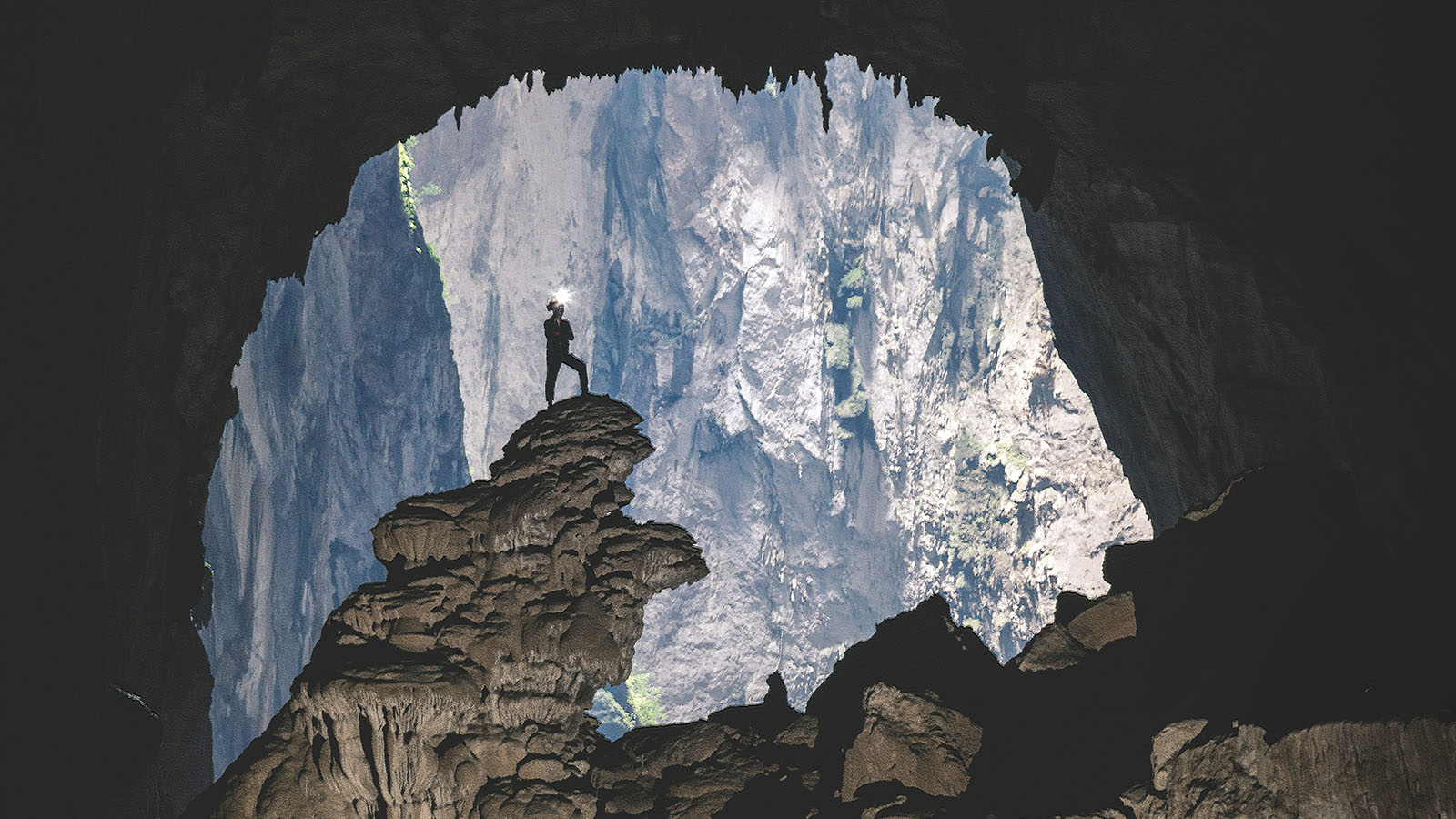




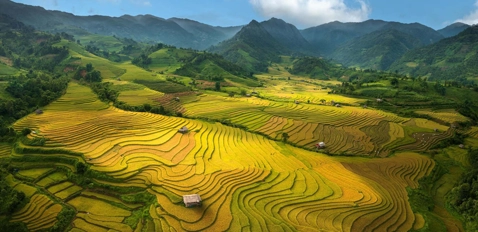

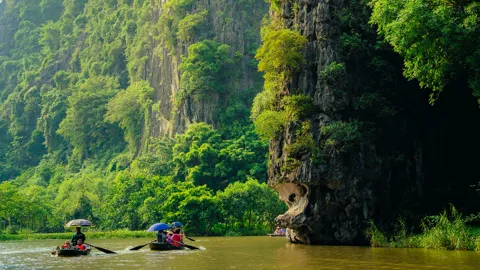




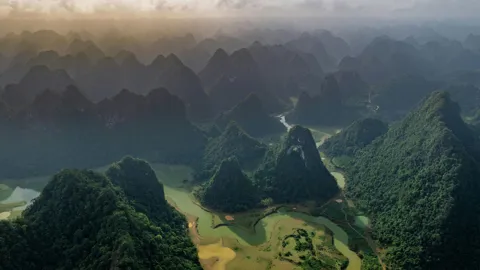

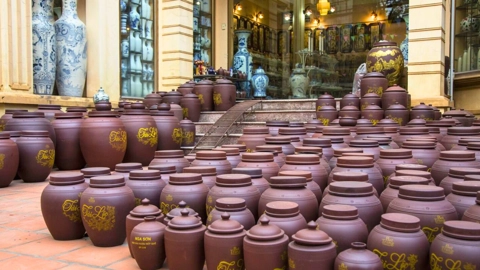













Comment